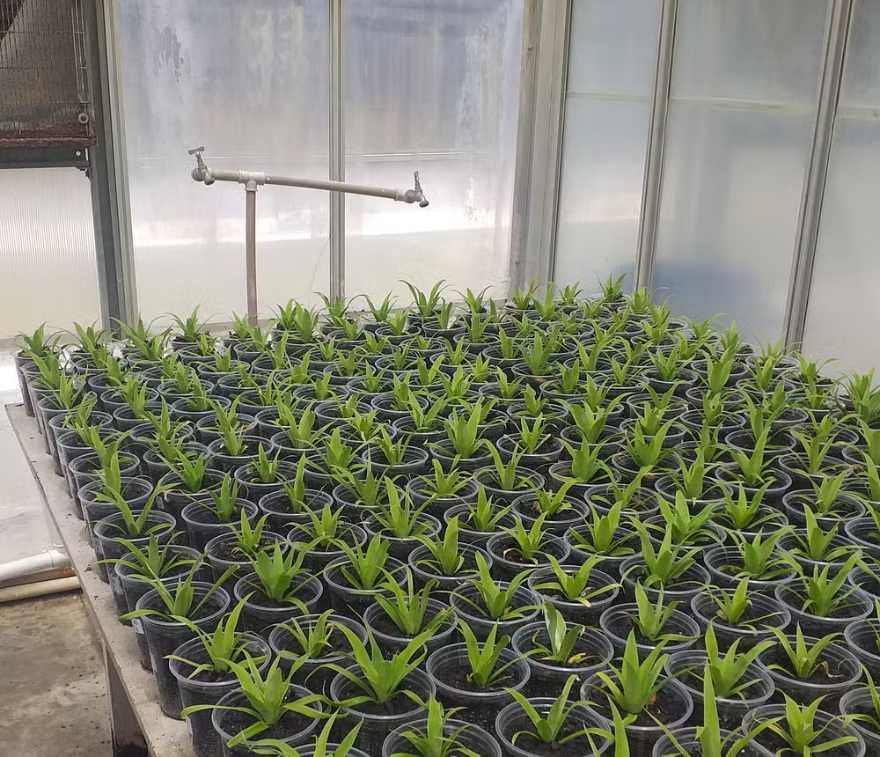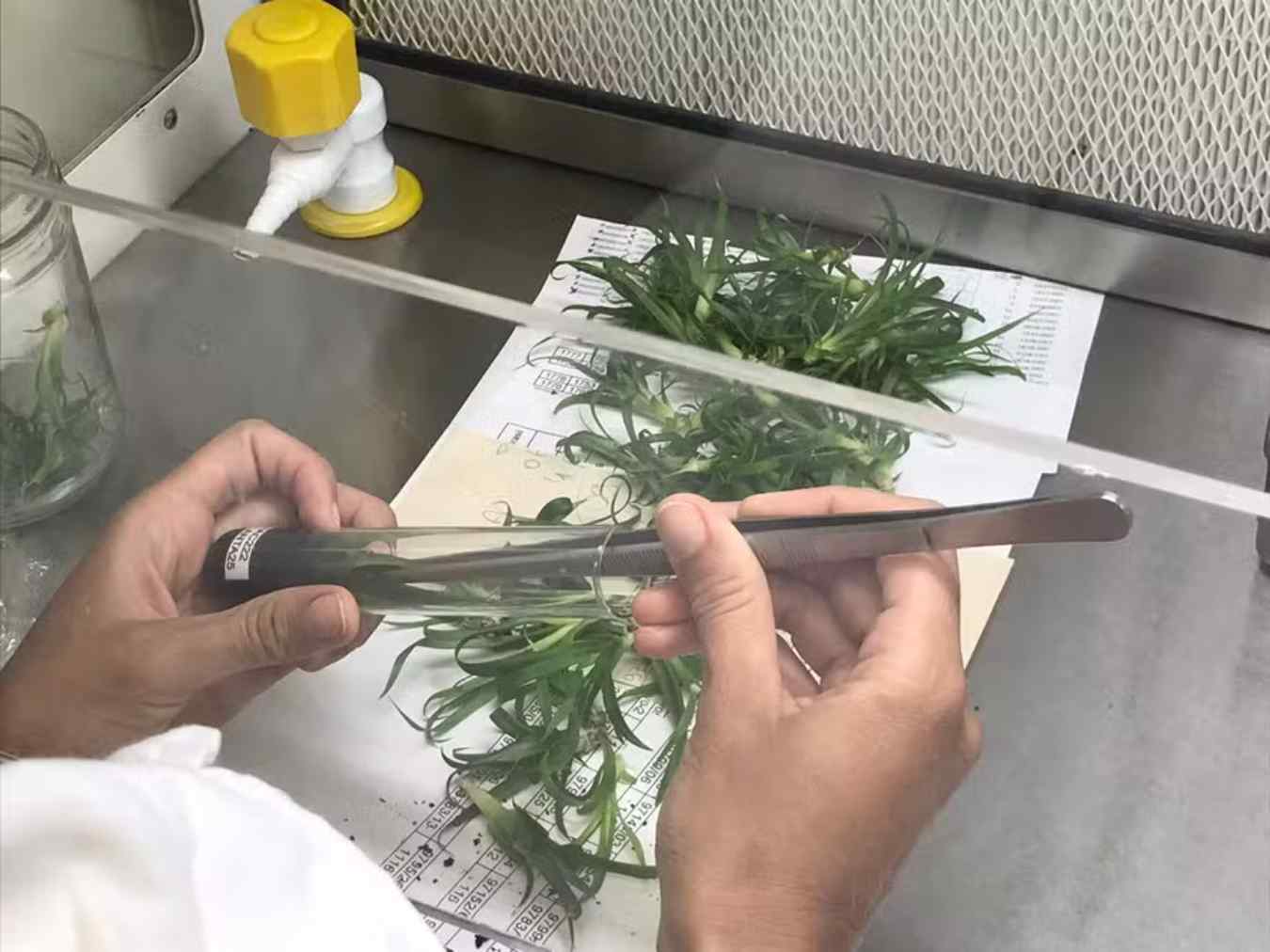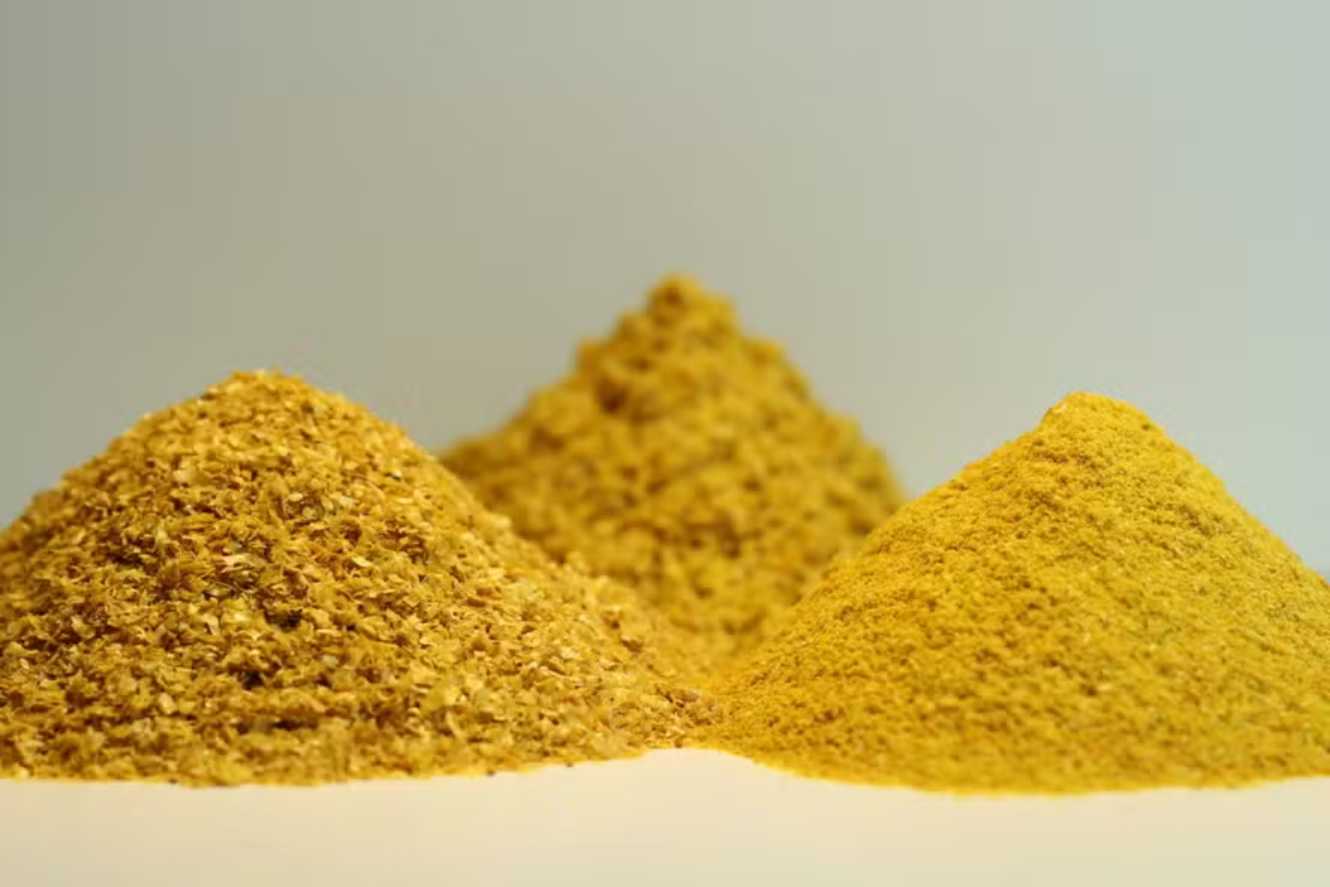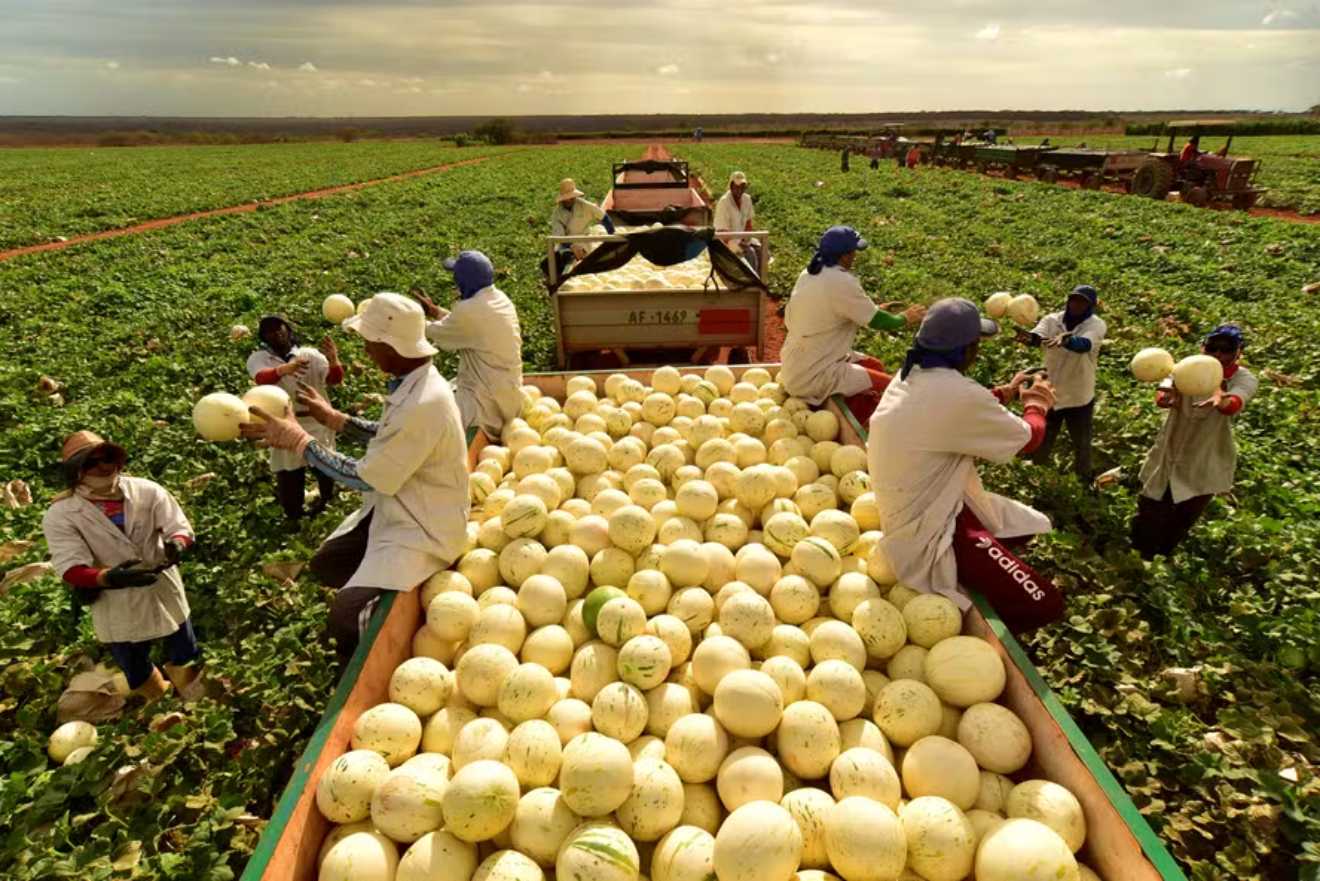A groundbreaking study by Embrapa has revealed that the time needed to produce pineapple seedlings can be accelerated by up to 34% through a process called microbiolization, which involves “acclimatizing micropropagated seedlings.” This method allows for three productive cycles in the same period that traditionally only two were possible, resulting in more resistant and healthy seedlings. The experiment was conducted with the BRS Imperial variety.
Why is this so relevant for Brazil’s pineapple production? One of the main challenges today is the time it takes to produce seedlings, which can take up to a year. Moreover, over 30,000 seedlings are required per hectare.
Initially, the study aimed to promote the replication of pineapple varieties consumed in Brazil and establish a plant conservation model. However, Embrapa researchers decided to carry out further testing. In a second study, they introduced key groups of microorganisms that promote growth and tested them in “in vitro seedling production environments (rooting stage), in vivo (acclimatization in greenhouses), and in semi-field conditions (in pots).”
Upon discovering bacteria present in the soil where pineapples are planted, the researchers realized there were additional benefits for fruit production. The research, published on November 5th in the Scientia Horticulturae journal by Elsevier, was conducted in collaboration with the Federal University of Recôncavo of Bahia (UFRB).
When isolated, these bacteria showed promising results and are now moving to field testing. So far, the pilot study has inoculated one of the bacteria in an “in vivo” environment, specifically in a greenhouse, where acclimatization time was reduced from 180 days to between 120 and 135 days.
Results
The outcome of the test showed an efficiency improvement of 25% to 34%, directly lowering costs for biofactories and making the seedling multiplication process economically viable, according to Embrapa.
“If you have a 34% increase in efficiency and seedling production remains constant, this can have a huge impact on the number of cycles you can complete per year. If the cycle was 180 days and is reduced to 120 days, I can now complete three cycles in 360 days within the greenhouse. This makes a big difference for seedling producers,” explains Saulo Oliveira, a phytopathologist at Embrapa and coordinator of the project.
The research is part of Embrapa’s broader efforts to create a more sustainable pineapple production system. “Using microorganisms as growth promoters is not new. However, this approach, which uses bacteria from the pineapple’s own microbiome, is innovative,” says Fernanda Vidigal, a researcher at Embrapa Cassava and Fruit Crops (BA) and project leader.
“Our study investigated the growth potential of isolates and the soil microbiome associated with pineapples to minimize losses, promote growth, and reduce the acclimatization time of seedlings,” she notes. The aim is to provide producers with higher-quality propagative material.
The study, titled “Use of Biological Inputs in Seedling Production and Improvement of Pineapple Cultivation,” was funded by the National Council for Scientific and Technological Development (CNPq), with continued support from Embrapa.
Seedling Multiplication
“Our research always focuses on BRS Imperial and Pérola varieties. The protocol for pineapple seedling multiplication via micropropagation is straightforward. The issue is the time it takes for the micropropagated seedlings to acclimatize in the greenhouse. To give you an idea, a banana seedling can leave the greenhouse in 45 days and move to the next stage. Pineapple seedlings, however, may take months, which makes them very expensive,” compares the researcher.
Making a parallel with banana cultivation, she points out that pineapple density in the field is between 30,000 and 40,000 plants per hectare, quite different from banana, which produces about 1,000 plants in the same area. Therefore, there is a large demand for healthy, large-scale seedlings. This is why reducing the time for seedling production is so important.
To produce the seedlings, Embrapa established the Ananás Network, which oversees seedling producers and multipliers who use the stem cutting technique. These producers receive basic materials from Embrapa, multiplied by the Biofactory Institute of Bahia (IBB) in Ilhéus.
What Is Micropropagated Seedling?

Micropropagated seedlings are the most recommended alternative for establishing pineapple matrices, as they allow the replication of disease-free seedlings. Herminio Rocha, an agronomist in Embrapa’s technology transfer area and coordinator of the Ananás Network, explains that seedlings produced by biofactories, known as plant matrices, are expensive and not intended for direct field planting.
“The Ananás Network does communication work to ensure that producers understand that distributing planting material through biofactories is a way to offer high-quality, disease-free genetics. This genetics is then multiplied by the producer, in the field, under non-controlled conditions,” Rocha explains.
He highlights the benefits of microbiolization, which could be used by biofactories and producers as studies on isolates progress.
“Microbiolization promotes agronomic traits in seedlings. They grow taller, the tissue becomes firmer, and they develop a more robust root system. All these traits are highly desirable,” reiterates Rocha.
The next step will assess whether the seedlings will exhibit the same behavior and replication quality in the field as they did in the greenhouse.





